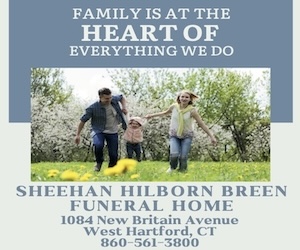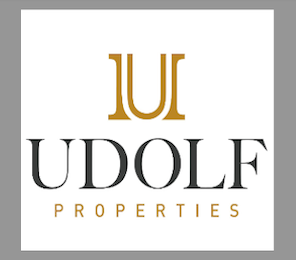By Harold Berman
Standing just a few steps from my home, my eyes take in the Arab village on the nearby hilltop, the dome of its mosque reaching skyward. A couple of hills beyond the mosque sits Bethlehem, and a little farther in the distance I can make out the skyline of Jerusalem.
At least I think that’s Jerusalem. Of late, I’ve been hearing rumblings that the Holy City is not a real place of flesh and blood and stone, but just a generic metaphor for a time when we’ll all play nice and get along with each other. I’m all for getting along and living in peace. But as I stare across these rugged hills, the city spread out before me is something decidedly greater than a metaphor.
Even though I live in Israel and couldn’t imagine living anywhere else, I rarely write about it. Ever since my wife and I co-authored a book last year about our “intermarriage gone Jewish” (Doublelife: One Family, Two Faiths and a Journey of Hope), I’ve written almost exclusively about issues related to intermarriage and conversion. Even our book stopped short of the time we made aliyah.
But ironically, it is my work on the issue of intermarriage that has compelled me to speak out about Jerusalem. Recently, The Jewish Forward invited me to become a regular contributor to The Seesaw, their new intermarriage Q&A column. Those who know my work with the intermarried (www.j-journey.org) know that I believe that many of the loudest voices in the field of intermarried outreach have it all wrong, and that we will draw in those on the margins of Jewish life by giving them irresistibly substantive and meaningful content, not by dumbing things down to the point where people may feel welcome but will never feel inspired. Content is king – that’s why these days, you’re as likely to find intermarried families at Chabad as you are at the local Jewish community center.
So, it was with some trepidation that I agreed to become an “advice maven” for The Seesaw, knowing that my answers would appear side by side with those who are coming to this issue from a markedly different place. But never did I imagine that I’d need to spell out why Jerusalem is a real place after all that holds some importance for the Jewish people. (If I manage to pull this off, then next week, I’m going to try my hand at explaining that the world is not flat.)
The Seesaw’s featured question came from a certain “Matzah Virgin in Los Angeles” (I’m going to assume for the moment that this isn’t his real name). Matzah Virgin is a 20-something Muslim dating a Jewish woman. He will soon be attending his first Passover seder at his girlfriend’s grandparents’ house. He wants to know what to expect and what he might do to prepare.
Where to begin? The answers, mine included, appear at www.forward.com. The one with top billing is from Susan Katz Miller, an adult child of intermarriage who wrote a book about how wonderful it is to raise children in two religions and, in fact, how much better, richer, more tolerant, open-minded, and just plain fun it is than for the rest of us who are stuck raising our children in what Katz Miller refers to as “mono-faith.”
After Katz Miller opines about dietary laws, mourns the drowning of Pharoah’s army, and weighs in on gefilte fish, she goes on to put Jerusalem in proper perspective for the rest of us. I will leave it to others to draw their own conclusions about Katz Miller’s commentary on said dietary laws, Pharoah’s army and gefilte fish. But when it comes to Jerusalem, I will not keep silent.
Here’s Katz Miller’s take: “Another challenging moment for many of us is the final words of the seder liturgy, ‘Next year in Jerusalem.’ Understand that not all Jews take these words literally, as a political claim on a geographic city. Many of us choose to interpret Jerusalem as a metaphor for a time of peace, for all religions, and for the whole world.”
Katz Miller hails from the Washington D.C. area, and I’m beginning to wonder if there’s something in the water around the Beltway that creates a propensity for obfuscation. Just a couple of years ago, journalists Steve and Cokie Roberts – also from the Beltway – wrote their Haggadah for interfaith families, in which they express their own reservations with the “Next Year in Jerusalem” phrase, and tell us that instead, they end their seder with “Next Year in Bethesda.”
While I can’t speak to the quality of gefilte fish in Bethesda, I can affirm that Jerusalem is a real geographic place, and that we Jews do have more than a passing – or metaphorical – connection with it.
At least 1,000 years before the dawn of Christianity, 1,600 years before Islam, and 3,000 years before Susan Katz Miller, there was Jerusalem. More than a mere capital city, it was – and is – the very soul of the Jewish people. Until the year 70, the Jewish people lived and thrived in Jerusalem, and created a civilization that has left its mark on the world to this day. They would have continued to do so if not for that little matter of the Romans sacking Jerusalem, burning the Temple to the ground, and sending the Jews off to captivity.
But for the next 2,000 years, even though we were prevented from maintaining sovereignty over Jerusalem, Jews continued to live there. And we never, never, never abandoned our dream to return. Over those many centuries, in every land to which Jews were dispersed, they ended the seder with those oh-so-problematic words, “Next Year in Jerusalem,” even as persecution and expulsion loomed. Three times every day, Jews prayed – and continue to pray – for the rebuilding of Jerusalem. And when we utter those sacred words, no matter where we are in the world, we face toward Jerusalem. A blessing for a rebuilt Jerusalem is part of every Birkat HaMazon (Grace after Meals), in every Jewish wedding ceremony, and in countless other places.
Metaphors for world peace are all well and good, especially when the real Jerusalem can seem a tad inconvenient for those who would rather not get too swept up in those messy details that come along with real life. Nevertheless, real peace will come, not by hiding from reality from the comfort of the Beltway, but by working at it in the here and now of the very real Jerusalem.
So, I would like to extend an invitation to Susan Katz Miller, and anyone else who wants to come along for the ride, to come to Israel and take a tour with me. We’ll start at my local supermarket, a few miles south of Jerusalem, where, safely out of view of the New York Times and CNN, Israeli Jews and Palestinian Arabs both work and shop together every day. As we wait in the checkout line, above the panel windows on the front wall, we can see a huge poster covering the length of the supermarket, which faces toward Jerusalem. That poster says, Im Eshkachech Yerushalayim . . . the Hebrew words from Psalm 137 – “If I forget you, O Jerusalem, let my right hand wither; let my tongue cleave to my palate if I cease to think of you, if I do not keep Jerusalem in memory even at my happiest hour.”
Next, we’ll enter Jerusalem itself. There, we’ll witness Jewish prayers ascending from countless synagogues, Christian prayers from churches and Moslem prayers from mosques. Because freedom of worship in the Holy City is guaranteed by law for all. But that freedom of worship became a reality only when the Jews regained their sovereignty. It didn’t exist before the Jewish return to Jerusalem.
We’ll then visit some of Jerusalem’s world-class hospitals – like Hadassah and Shaarei Tzedek – where Arab and Jewish doctors work side by side to preserve the lives of their Arab and Jewish patients. Then we’ll visit some amazing non-profit organizations like Yad Sarah, which helps the sick, disabled and elderly – Jewish, Muslim, Christian, Arab, religious, secular – it doesn’t matter. Help is given to all who need it.
We’ll move on to the Hartman Institute where Jewish, Christian and Muslim clergy explore their differences together. Then we’ll take a stroll around the Holy City, where we’ll see people of every shade and hue shopping in the malls, filling the cafes, riding the buses, going to school, coming home from work – in short, living their lives just as people do everywhere.
Some will object that the picture I paint is too rosy, that Jerusalem has its problems, that there are tensions and maddeningly irresolvable issues. Yes, all that exists too. If some of those issues exist elsewhere, then how could they not in a 3,000-year-old city that is laden with so much symbolism, spirituality and contested real estate?
But despite the challenges, we continue to live our lives as if we are moving toward peace every day – not as a distant, mushy metaphor, but as the real thing.
I will say, unapologetically, that these strides toward peace and co-existence have been made only in a Jerusalem under Jewish sovereignty, and never before that.
So I know what I’m going to say at the end of my Seder this year. And the last word is not Bethesda.
Next Year in Jerusalem, Rebuilt!
Harold Berman is director of J-Journey.org, which provides mentoring and support for intermarried families exploring the possibilities of observant Jewish life, and co-author with his wife Gayle, of Doublelife: One Family, Two Faiths and a Journey of Hope. He is the former executive director of the Jewish Federation of Western Massachusetts.
Leave Your Reply
You must be logged in to post a comment.








 Southern New England Jewish Ledger
Southern New England Jewish Ledger









1 Comment